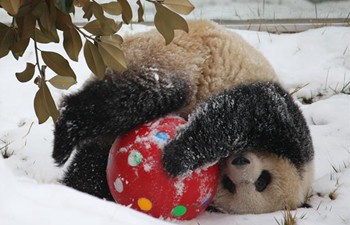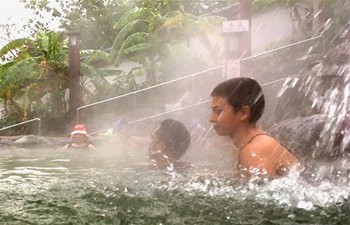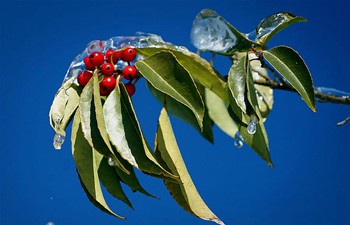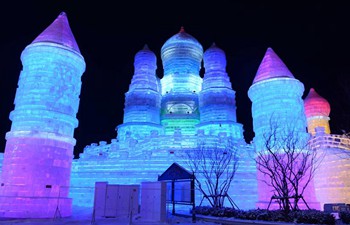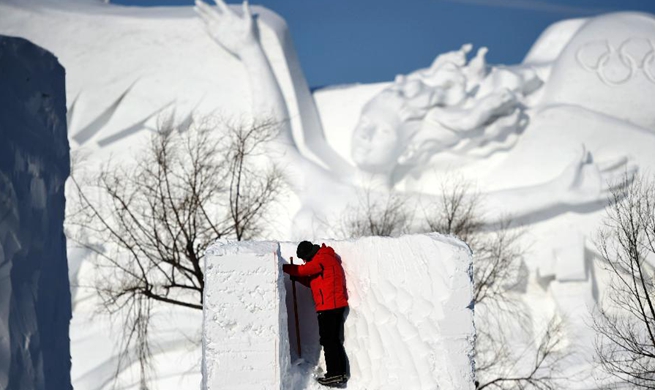WASHINGTON, Jan. 10 (Xinhua) -- For the first time, scientists have found the presence of organic matter, the ingredients essential for life, in two liquid-water-containing space rocks that separately crashed to Earth in 1998 after circulating in our solar system's asteroid belt for billions of years.
A detailed analysis of the chemical makeup within tiny blue and purple salt crystals sampled from the two meteorites, known as Monahans and Zag, found a mix of complex organic compounds such as hydrocarbons and amino acids, according to the study published Wednesday in the U.S. journal Science Advances.
"This is really the first time we have found abundant organic matter also associated with liquid water that is really crucial to the origin of life and the origin of complex organic compounds in space," said lead author Queenie Chan, a planetary scientist and postdoctoral research associate at the Open University in Britain.
Organic remnants recovered from the meteorites don't provide any proof of life outside of Earth, Chan noted.
But if life did exist in some form in the early solar system, these salt crystal-containing meteorites raise the possibility of trapping life or biomolecules within their salt crystals, she said.
The two meteorites that yielded the two-millimeter-sized salt crystals were carefully preserved at the Johnson Space Center of the U.S. space agency NASA.
One of the space rocks smashed into the ground near a children's basketball game in Texas in March 1998, and the other hit near Morocco in August 1998.
The tiny crystals containing organic solids and water traces measure just a fraction of the width of a human hair and are believed to date back to the infancy of our solar system -- about 4.5 billion years ago.
The researchers observed a striking difference in the amino acid composition between the crystals and the meteorites in which they were found, indicating both came from separate origins.
They suspected that the crystals were ejected into space by ice- or water-spewing volcanic activity on Ceres, a brown dwarf planet that is the largest object in the asteroid belt.
These materials then fell to passing asteroids where Monahans and Zag were originally located, possibly including Hebe, a major source of meteorites that fall on Earth.
There are also structural clues of an impact, perhaps by a small asteroid fragment impacting a larger asteroid, the same event that could have also triggered the hydrovolcanic activity on Ceres, Chan said.
This opens up many possibilities for how organic matter may be passed from one host to another in space, she said.
"Everything leads to the conclusion that the origin of life is really possible elsewhere," Chan added.





